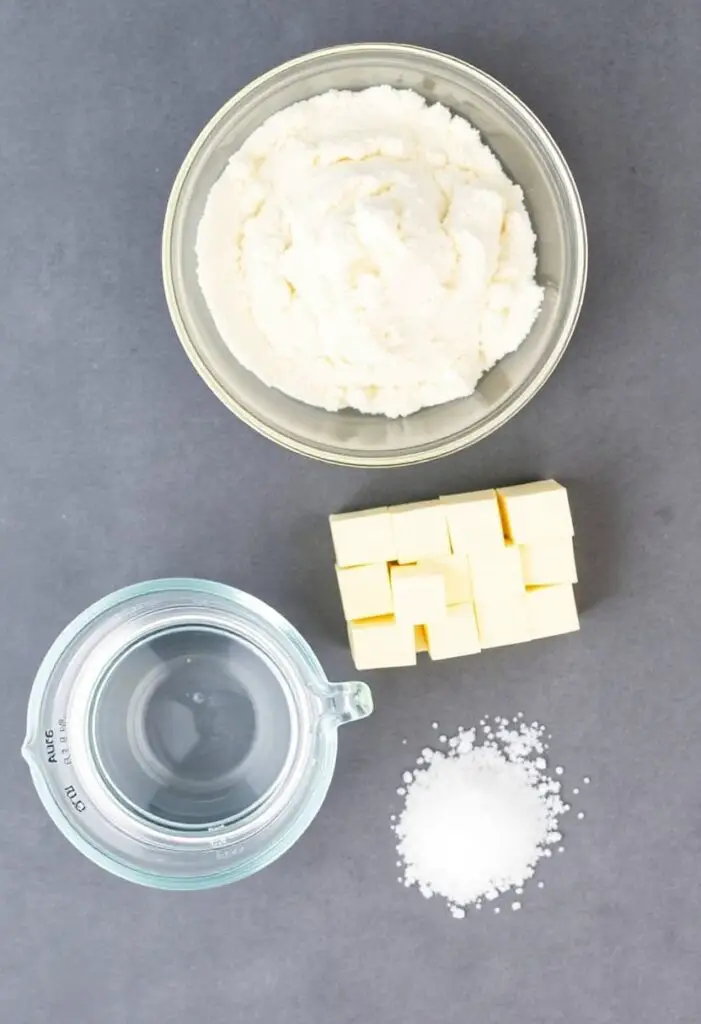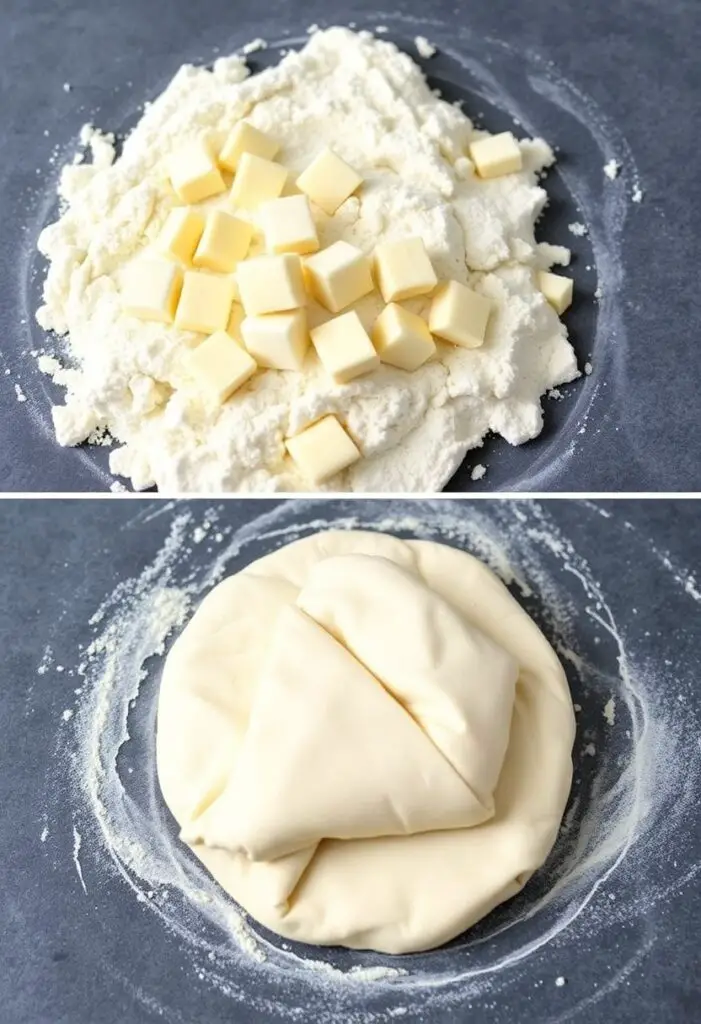How to Make Pastry Dough (Because Store-Bought is a Sad, Flaky Lie)
Let’s be real. You’ve probably been there. Staring at a recipe for a gorgeous pie, a delectable tart, or a flaky galette, and then you hit that line: “prepare your favorite pastry dough.” Suddenly, your culinary dreams crash. Store-bought dough? It’s fine, I guess, for emergencies. But does it truly deliver that tender, buttery, melt-in-your-mouth perfection? Does it have the soul of homemade? No, my friend, it does not. Today, we’re empowering you. You are going to learn how to make pastry dough from scratch, and it’s surprisingly simple, incredibly rewarding, and leagues beyond anything you can buy in a box.
Why This Recipe Is Awesome (It’s Your Golden Ticket to Flaky Bliss)
Why bother making pastry dough from scratch when you can just unroll a pre-made sheet? Because this recipe is your golden ticket to superior flavor, texture, and bragging rights. Homemade pastry dough, especially this butter-rich version, simply tastes better. It has an incredible depth of flavor and a tender, flaky texture that store-bought versions can only dream of.
It’s also incredibly versatile. This basic shortcrust pastry (or pâte brisée, if you’re feeling fancy) forms the foundation for so many sweet and savory delights. Think pies, tarts, quiches, savory hand pies… the possibilities are endless! And honestly, the satisfaction of pulling a perfectly golden, flaky creation out of your oven, knowing you made the base yourself? Priceless.
Ingredients: Your Essential Flaky Four
You really don’t need much. This is a testament to culinary minimalism.
- 2 ½ cups all-purpose flour
- 1 teaspoon salt
- 1 cup (2 sticks) unsalted butter, very cold and cut into ½-inch cubes
- ½ cup ice water, plus 1-2 tablespoons extra if needed
Key Ingredient Notes (Don’t Skimp Here!):
- Very Cold Butter: This is non-negotiable. Cold butter creates those pockets of steam that give you a flaky crust. If your kitchen in Khulna is warm, stick your butter (and even your flour!) in the freezer for 10-15 minutes before starting.
- Ice Water: Again, cold is key. Use actual ice water, not just cold tap water. The colder the ingredients, the less gluten develops, and the flakier your crust.
Tools & Kitchen Gadgets Used: Your Dough-Making Arsenal
You don’t need a professional pastry kitchen, but a few tools definitely make life easier.
- Large Mixing Bowl
- Pastry Blender / Dough Blender (Highly recommended, but forks work too!)
- Measuring Cups and Spoons
- Plastic Wrap
- Rolling Pin
- Bench Scraper (Super helpful for cleaning up and moving dough.)
Step-by-Step Instructions: The Journey to Flaky Perfection
This isn’t a race; it’s a gentle art. Take your time, and the dough will reward you.
- Prep Your Dry Ingredients: In your large mixing bowl, whisk together the all-purpose flour and salt. Set it aside.
- Cut in the Cold Butter: Add the very cold, cubed unsalted butter to the flour mixture. Using your pastry blender (or two forks, or your fingertips if you’re quick and have cold hands), cut the butter into the flour. You want a mixture that resembles coarse meal, with some pea-sized pieces of butter remaining. These butter bits are crucial for flakiness, FYI.
- Add the Ice Water (Carefully!): Gradually add the ½ cup of ice water, one tablespoon at a time, stirring with a fork after each addition. Mix just until the dough starts to come together. You might not need all the water, or you might need a tiny bit more (up to 2 extra tablespoons). The dough should be moist enough to hold together when squeezed, but not sticky. Do not overmix! Overworking the dough develops gluten, leading to a tough crust.
- Form the Disc: Gently gather the dough into a ball and then flatten it into a thick disc. Don’t knead it. Just bring it together. If you’re making two crusts (like for a double-crust pie), divide the dough in half and form two discs.
- The Essential Chill: Wrap the dough disc(s) tightly in plastic wrap. Now, here’s the hardest part (IMO): chill the dough in the refrigerator for at least 1 hour, or up to 2 days. This allows the butter to firm up again and the gluten to relax, making it easier to roll and ensuring maximum flakiness.
Calories & Nutritional Info (Per Serving, Estimated)
Let’s just say it’s worth every bite for that homemade goodness. (This is an estimate per serving, assuming 8 servings per batch.)
- Estimated Calories per serving: ~280-320 calories
- Fat: ~18-22g
- Carbohydrates: ~25-30g
- Protein: ~4-5g
Common Mistakes to Avoid: Don’t Let Your Pastry Crumble!
Even seasoned bakers mess up pastry dough sometimes. Learn from these common blunders.
- Warm Butter: If your butter is soft or melted, you’ll end up with a greasy, tough dough instead of a flaky one. Keep that butter COLD.
- Too Much Water: Adding too much water makes the dough sticky and tough, and difficult to roll. Start with the recommended amount and add more only a teaspoon at a time if truly needed.
- Too Little Water: If your dough is too dry, it will be crumbly and won’t hold together when you try to roll it. It should just come together when squeezed.
- Overworking the Dough: This is the arch-nemesis of flaky pastry. Every time you touch, knead, or roll the dough, you develop gluten. Too much gluten equals a tough, chewy crust. Work quickly and gently.
- Skipping the Chill: The chilling step isn’t just for fun. It re-firms the butter and allows the gluten to relax, making the dough manageable and ensuring flakiness. Don’t skip it!
Variations & Customizations: Your Dough, Your Rules
This basic recipe is a fantastic starting point. Here are a few ways to tweak it.
- Sweet Pastry Dough (Pâte Sucrée): For dessert pies and tarts, add 2-3 tablespoons of granulated sugar to the flour mixture. You can also add a ½ teaspoon of vanilla extract with the ice water for extra flavor.
- Whole Wheat Wonder: Replace ½ cup of the all-purpose flour with whole wheat flour for a nuttier, heartier crust. This is especially good for savory pies or rustic galettes.
- Herbed Savory Dough: For quiches or savory tarts, add 1-2 tablespoons of finely chopped fresh herbs (like rosemary, thyme, or chives) and ¼ teaspoon of black pepper to the dry ingredients. You can also add a pinch of garlic powder.
FAQ Section: All Your Doughy Dilemmas, Solved
You’ve got questions. I’ve got answers.
- Q: Can I use a food processor to make pastry dough? A: Yes, you can! Pulse the flour, salt, and cubed cold butter together until it resembles coarse meal. Then, add the ice water slowly through the feed tube while pulsing just until the dough comes together. Be careful not to overmix!
- Q: My dough is too crumbly and won’t come together. Help! A: Add a tiny bit more ice water (½ to 1 teaspoon at a time) and gently bring it together. Don’t force it; you want it just moist enough.
- Q: My dough cracked a lot when I tried to roll it. What happened? A: This usually means it was either too cold (let it sit at room temperature for 10-15 minutes before rolling) or it’s too dry (not enough water).
- Q: Can I make this dough ahead of time? A: Absolutely! The dough keeps well in the refrigerator for up to 2 days. You can also freeze it for up to 3 months. Thaw overnight in the fridge before using.
- Q: What’s the best way to roll out pastry dough without it sticking? A: Lightly flour your work surface and your rolling pin. Roll from the center outwards, rotating the dough frequently. If it starts to stick, lift it and add a tiny bit more flour underneath.
- Q: Why do some recipes use shortening instead of butter? A: Shortening produces a very tender and flaky crust because it has a higher melting point and no water. However, butter offers superior flavor. IMO, butter is always the better choice for flavor, even if shortening can achieve slightly more flakiness.
- Q: How do I know when to stop adding water? A: The dough should just barely come together when you squeeze a small piece in your hand. It shouldn’t be sticky, but it also shouldn’t crumble apart. Trust your instincts!
Final Thoughts: Embrace Your Inner Pastry Chef
You’ve done it! You’ve conquered the fear, faced the butter, and emerged victorious with a beautifully crafted batch of homemade pastry dough. Your pies, tarts, and quiches will thank you. Your taste buds will sing. And honestly, isn’t it just a little bit satisfying to know you can make something so foundational, so delicious, all by yourself? Go forth and bake something amazing. You’ve earned those flaky layers.



